Spatially Limited Gardening: The Indoors is the New Outdoors
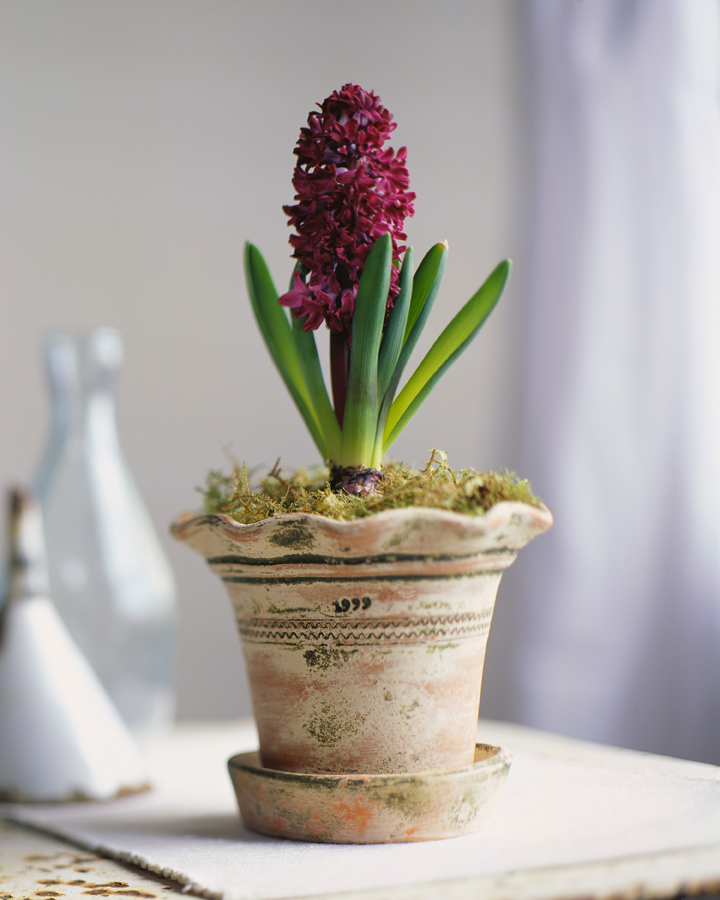
Posted in Living by Windermere Guest Author
 It is the official start to the gardening season! For those who have large outdoor spaces, it is the perfect time of year to make a trip to the home and garden store, work in your gardens, and plant new growth. For those who live in smaller city quarters and whose outdoor space comfortably holds little more than a potted plant, we are forced to be more creative with our green space.
It is the official start to the gardening season! For those who have large outdoor spaces, it is the perfect time of year to make a trip to the home and garden store, work in your gardens, and plant new growth. For those who live in smaller city quarters and whose outdoor space comfortably holds little more than a potted plant, we are forced to be more creative with our green space.
Decorative plants and nurturing vegetation is something that makes my house a home, even if small city living quarters has forced us to learn to take the outdoors- in and work with what space we have. Indoor plants, flowers, and gardens are a pleasing alternative when you do not have the space or the desire to be outdoors. Adding some green to your home can be decorative, fragrant, and even edible. Planting and nurturing your growth is a fun do-it-yourself project that can be a whole household activity.
Where to start
How will you grow and what supplies will you need? First decide on your method of growing.
Traditional Potted Plants are a great starting point for the non-gardening types. Potting plants is relatively simple, cost efficient, and spatially low maintenance. Check out these ideas for potting and planting in small spaces.
Vertical Gardens break away from the customary terracotta pot. They are both modern and space saving. In a vertical garden you are able to grow a variety of plants, flowers, herbs, and vegetables. They can be practical and decorative inside or out. Learn more about creating your own vertical garden here.
Hydroponic Systems are a soil-free gardening solution that can involve little to no pesticide use. Green Tree’s Hydroponics reports that the growth rate of a hydroponic plant is 30-50 percent faster than that of a soil plant. Here’s what it takes to build your own, however you can also purchase hydroponic systems online.
Terrariums are “making a comeback” according to the New York Times. Terrariums can be uniquely ornamental and perfect for tight spaces that need a hint of green. Check out some samples and get design ideas here.
What growing methods have worked well for you?
What to grow?
That are good to eat …
Herbs: growing edible items can be very rewarding. Herbs are my go-to item to grow inside because they are low maintenance and take up little space. I prefer to pot basil, parsley, chives, thyme, cilantro, and oregano.
Grasses, like wheat grass, are becoming popular to grow indoors and decorate your home with.
Fruits and vegetables tend to take up more space and are more demanding. However tomatoes, peppers, radishes, leaf lettuce, potatoes, and carrots are a few fruits/vegetables that will grow well indoors.
That are good to look at …
Several flowers and house plants will flourish and bloom indoors. I enjoy the fragrance of Gardenia and the appeal of a Boston Fern in a hanging basket. However, using a plant encyclopedia will help you find which plant is right for you and your home.
What do you prefer to grow?
Making it look good?
The great part about bringing your garden inside is that it lets you use vegetation as a decoration. Whether you prefer to arrange flowers, string kokedama, or paint a fun plant pot, your vegetation and the way you display it can have an impact to your overall décor. How do you decorate with your vegetation?
Brittany Lockwood works in Marketing at Windermere Real Estate. She is the in-house expert onweatherizing, yard-sales, and interior design.
Make the Most of the Home You Have
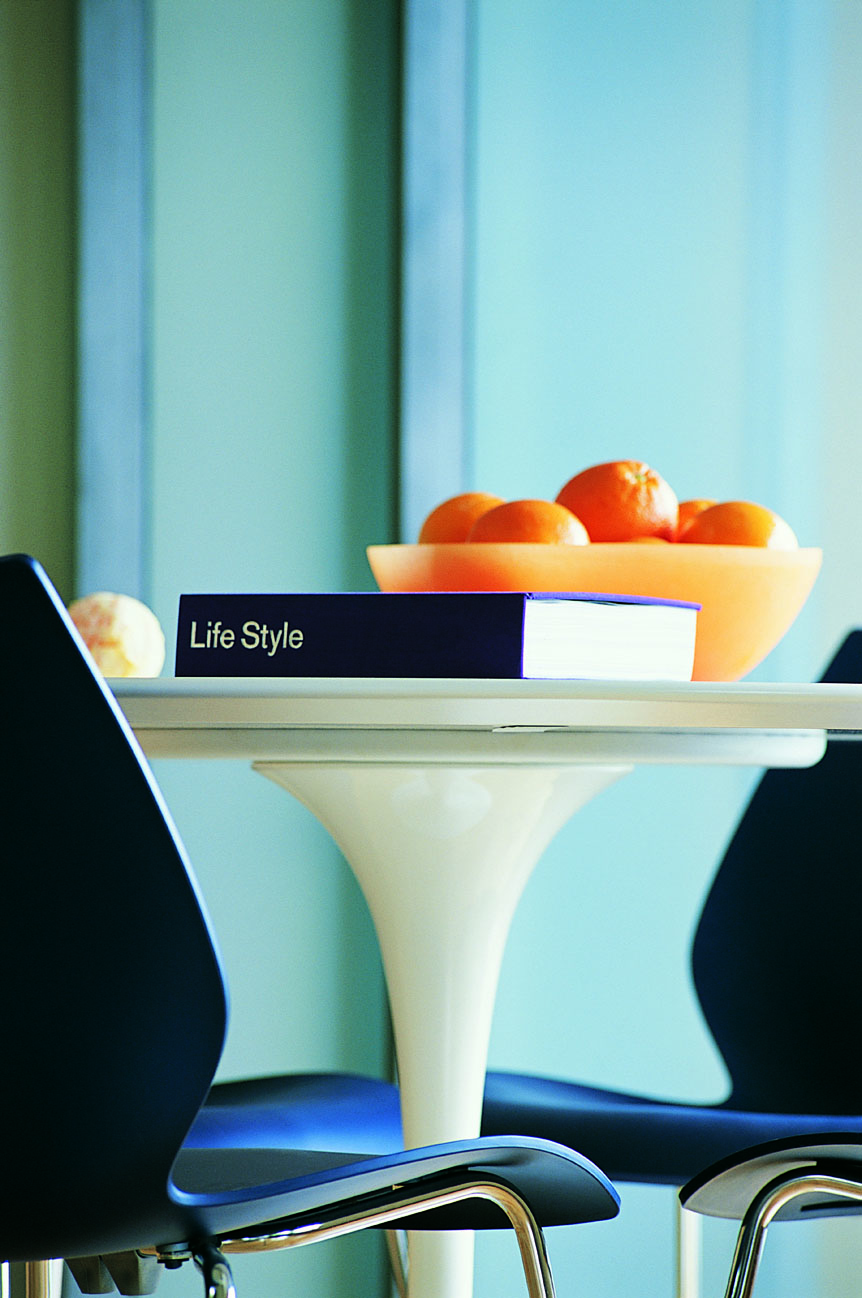
Posted in Living by Tara Sharp

If you have been in your home for a while you may be restless for change. The great part about having a home of your own is you can make improvements and give your home a chance to evolve over time. You just need to help your home live up to its potential! Here is a top ten list of improvements that will help you make the most of your home.
-
- Find your home’s purpose. Each home is as unique as its owners, so in order to fully utilize your home, consider how you view your home’s purpose. Some people like to entertain, others find it a calm space in the frenzy of daily life; some nurture their families and others nurture their creativity. Your home’s purpose can be any combination of these and more, but it helps to consider the function of your space in order to ultimately find its purpose.
- Assemble a list. A list always helps me figure out where to start or prioritize what is the most important project. Think about what you want to change in your home, inspirations, and preferences.
- Make an “inspiration board”. An “inspiration board” is a great way to visualize your home’s decor. You can create a board online with a tool like Pinterest to organize ideas you love or you can do it the old fashioned way with a board, magazine cutouts, color swatches, and fabric samples. Doing this will allow you to see all the elements you like in one place so that you can then tie it all together into a room you love.
- Create a collection. If you have items that you like to collect, think about how to transform that collection into something you can display. If you don’t already have a collection of loved objects think about what this collection would be for you. You can center a room design around your travel souvenirs, old camera collection, figurines, unique plates, or familial objects. Adding to this collection over time can be a great way to keep your spaces new while maintaining a personal feel to your decor.
- Choose a new palate. Shake up your sensibilities and think of a color that will compliment your room while making a statement. It’s easy to fall into the white/beige standby to keep our rooms neutral, but sometimes a color that provides a contrast to your décor will make the room pop.
- Repurpose an old piece of furniture. Instead of replacing your furniture give it a facelift. You can have a sofa or chairs reupholstered or make use of a slip cover. Also, Painting and staining can add new life to your wood pieces.
- Rearrange. Moving furniture around is another easy way to reinvent your space. Try placing your sofa on an angle to open up your entertaining room or move your lamps to improve lighting. You can also think about moving a piece of furniture into a room to give it new life, like using a unique dresser for a credenza or a chair as a side table.
- Make a room of your own. Find some space in your home that is uniquely yours, whether this is the corner of the guest room or an office of your own. It can be very rewarding to have a space that you can organize to fit your personal needs without the worries of others intruding
- Find an inspirational object. Have you ever fallen in love with an object that inspired you to want to completely redo a room to accommodate it? Designing a room around an inspiring object can be a great way to create a space that truly embodies your design sensibility.
- Find design motivation. Home design evolves over time and can be sustained by finding items that inspire you. Read magazines and books that inspire your interests in architecture, design, art, etc. Or find stores and flea markets that sell pieces that influence your aesthetic. Or bring a camera with you when you’re doing your favorite activities and bring back memories or inspirations. Most of all have fun!
What inspires your home design?
By Tara Sharp
Moving Life Home
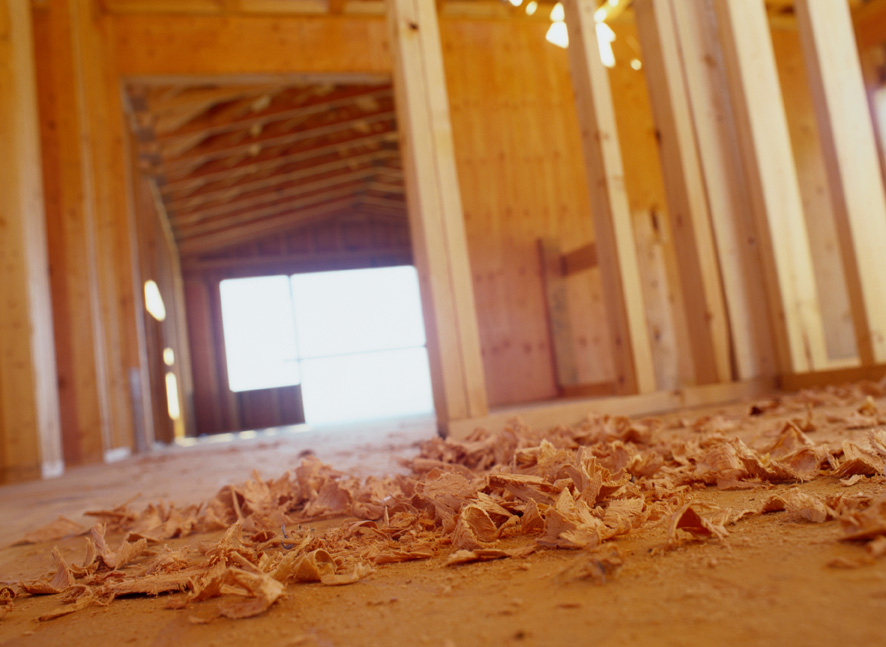
Posted in Architecture by Windermere Guest Author
 Ipod and water bottle in hand, Dave strolls down a flower lined path toward his first destination of the morning, his gym. At the door to the gym, he is greeted by his wife, Janet. Janet takes a sip of her latte, gives Dave a kiss and tells him she’s off to the studio. While Dave is turning on some music and contemplating how many miles he’ll put on the treadmill today, Janet walks up a staircase to her studio.
Ipod and water bottle in hand, Dave strolls down a flower lined path toward his first destination of the morning, his gym. At the door to the gym, he is greeted by his wife, Janet. Janet takes a sip of her latte, gives Dave a kiss and tells him she’s off to the studio. While Dave is turning on some music and contemplating how many miles he’ll put on the treadmill today, Janet walks up a staircase to her studio.
The kiln in the corner warms the studio from the chill of the rainy night before. Janet hangs her coat and inspects yesterday’s creations on the drying rack. In her mind, she’s sizing up what glaze and design she’ll use for each piece. Dave will head to his office on the other side of the building after his workout.
Depending upon where you live, you might have your own vision of this scene. Perhaps it’s a downtown building that has ground level shops, like a gym, and small spaces upstairs for rent, like a studio. Maybe an office park in the suburbs. Perhaps even a co-op village. For Dave and Janet, though, the gym and studio are in a part of their backyard that used to be home to a jungle gym, sandbox and 4-square court. When they became empty nesters, they decided to consolidate their life, cut commuting expenses, and take advantage of some unused space at home. They created a two story, backyard cottage that had a gym, bath and shower, and kitchenette on the ground floor, as well as side-by-side offices on the upper level. Dave, rather than a kiln and pottery supplies, has a desk and display of catalogues that he will use in presentations when clients visit him.
Backyard cottages have been gaining in popularity and attention lately. With the changes in the housing market making it impractical to sell some homes, possibly gas prices making long commutes impractical, or maybe the desire to simplify a life that’s been too removed from home, its’ easy to see why someone might choose to build one. Many people build them to be guest quarters, mother-in-law apartments, a rental unit for additional monthly revenue, or temporary lodging for boomerang offspring who are trying to land that first job out of college. Some of these are as simply built as a miniature starter home, and yet others are elegantly equipped as a five-star hotel.
To maximize the value of these buildings, they should be planned by an architect so that they will work for your intended use. In the example, Janet’s kiln would be heavy and very hot, so several building precautions would be warranted. One short cut to avoid would be to do anything less than fully permitted and inspected, as failure there can cost far more than the property tax levy to take care of later. It’s advised that unless you have lots of experience, have the riskier tasks done by subcontractors.
These buildings will add value to the homeowner’s property over time, as if they are built properly, they’ll appreciate in conjunction with the value of the home. The reasons for having one are many and personal, but if you were to drive down many city streets, you will find one hiding under the trees in a corner of the backyard.
Can you see a point of your life, and a place on your property, in which a backyard cottage would make sense?
 By Eric Johnson, Director of Education
By Eric Johnson, Director of Education
Johnson has several years experience as a real estate agent and real estate instructor, as well as experience in construction project management, digital media/publishing and insurance. He has a bachelor’s degree in anthropology from University of Colorado.
A little goes a long way: a top ten list for making the most of your home improvement

Posted in Living by Tara Sharp
 This weekend I spent the greater part of Saturday taking care of the ongoing household to do list and the transformation made a huge impact. There certainly is more to do, as is the nature of home improvement, but having a finite list of things to accomplish and making time to enjoy them made all the hard work worth it! Here is my top ten list of how to make the most of your time when tackling home-improvement projects.
This weekend I spent the greater part of Saturday taking care of the ongoing household to do list and the transformation made a huge impact. There certainly is more to do, as is the nature of home improvement, but having a finite list of things to accomplish and making time to enjoy them made all the hard work worth it! Here is my top ten list of how to make the most of your time when tackling home-improvement projects.
1. Imagine your perfect place. Your home should reflect your personality, the way you spend your time, and fit your needs. If you want a place to entertain, to relax and meditate, to create art, nurture your children, or display your collections, you will want to consider your priorities. Once you have explored the possibilities the next step is to prioritize your to-do list in order to make the most impact.
2. Make a list. Some home project lists could go on and on (and on), so it’s a good idea to write out a list and discuss the details with the members of your household so you know where to start and who is responsible for what.
3. Prioritize. Once you know what needs to be done it’s time to prioritize the list. If there is something timely (like getting gutters before the fall) keep that in mind when prioritizing, but also think about those projects that will bring you the most joy in daily life.
4. Do one project that really makes a difference. I recently finished sprucing up the living and dining rooms with new curtains and new furniture for storage and display. These are the rooms I spend the most time in at home, so the difference is palpable to how I view my home. Now we are ready for a big dinner party which is one of the most important things in our household. From this experience, I realized that small changes and some cleanup can make a huge difference.
5. Keep it reasonable. Make sure your list is reasonable. The goal isn’t to get everything done in one weekend, which typically isn’t feasible anyway. Rather, you want the time you invest in your home to be enjoyable and give you the sense of satisfaction (and motivation to do more).
6. Gather your tools. Nothing will derail a project like not having the right tools. Once you know what you are going to accomplish make sure all your supplies are ready. You’ll be far more efficient if you hit the hardware store, fabric store, gas station, etc. prior to getting started.
7. Work together. Some projects are two-people projects. If you share your household, enlist other members to share the work. Some projects need two people to lift, spot, hand tools, push, pull, etc. If you live alone, have a work party by inviting a friend over to help. You can return the favor if they ever need help with a household project.
8. Enjoy the process. Blast music, take breaks, and step back to reflect on your household improvement. If you need to dedicate a weekend to doing your chores, you may as well still enjoy it!
9. Get the list done. If you’ve taken the time to make your list reasonable you shouldn’t have any trouble completing it. Doing so will reaffirm your sense of accomplishment, so when you look at what was done, you won’t be thinking about what you have to do next.
10. Bask in your success. Focus on the improvement, enjoy your space, and most importantly, use it! If you made your bedroom a sanctuary, light a candle and relax with a good book. If you reconfigured your kitchen for more efficient use, have your own Iron Chef moment and cook a huge meal. Just remember, all your planning and hard work should be enjoyed.
What are your tips for making the most out of your home?
When it comes time to downsize

Posted in Buying, Selling, and Living by Windermere Guest Author
 When it comes time to decide if you want to downsize, there are many thoughts and emotions that go speeding through your mind. Maybe you have already decided this is your home for the rest of your life. Your home was the perfect place to meet your needs when you were in an earlier cycle of life, and will be the ideal home for all the events you see happening in your next. If you are inclined to feel that the home you currently reside in may have out-lived its purpose, you may be struggling with some of the same thoughts and emotions my husband and I had when it came to the emotional and financially sensitive decision to downsize.
When it comes time to decide if you want to downsize, there are many thoughts and emotions that go speeding through your mind. Maybe you have already decided this is your home for the rest of your life. Your home was the perfect place to meet your needs when you were in an earlier cycle of life, and will be the ideal home for all the events you see happening in your next. If you are inclined to feel that the home you currently reside in may have out-lived its purpose, you may be struggling with some of the same thoughts and emotions my husband and I had when it came to the emotional and financially sensitive decision to downsize.
In our situation, we loved our home. It provided everything we needed to raise our three children, plus nurture all the creative projects that identified who we are as a family as well as individuals. Our children were just like anyone else’s; loved, individually different, all requiring unique activities and space to help them grow, using their special talents. We loved our neighborhood and took an active part in making it an extension of our home. Considering that it had been our home for decades, deciding to leave was emotionally difficult.
We spent several years before we knew we would leave our home, looking at all the smaller options. We wondered, should we look for another single-family dwelling or check out other options like co-ops of condominiums? My husband had spent the past twenty-five years mowing our lawn and was quite willing to remove this task from his plate. I, on the other hand, still loved to garden. Was there a living environment that could satisfy both these expectations? We looked at every condominium and every co-op in the Seattle area for five years, but nothing really fulfilled everything we needed. We had a list of features including a garden spot, closets and efficient use of space, etc. I’m an Old World Charm lady, but guess what? Back in the 20’s ladies only owned three dresses. Let’s just say, I own a few more outfits than most pre-war closets were meant to hold. So the search went on.
When our children finally reached their 20’s and my husband wanted to retire, we knew it was time to make our move. Like I said, everyone loves their children, but not all the party time we now came to expect in our rec room every weekend. We were ready to have a space of our own, and it was time for our kids to begin their next cycle in-life. We also had too much of our finances tied up in a 3,000 square foot house, when in reality we needed less and could save more. We had to leave the home we had dedicated to making our unique expression of who we were, and leave very soon.
If any of this sounds familiar, your task will be a little easier than it seems! Here is some practical advice for making your move:
Define your needs: Narrow down your ideal needs. Start by deciding if you want a single-family versus multi-family dwelling. Consider your price range, and then space needs.
Downsize: We downsized a bit more than we should have, but we sure got rid of lots of items we collected over the past 25 years. Some of them were special to me. I’d purchased a beautiful wood serving tray at a yard sale with one of my dearest friends. I had to borrow money from her to buy it. I solved the problem by giving it to her when we moved, and I still see it when I visit her home. My children took much of the furniture they had a special connection to, and my nephew, who spent nearly every Christmas sitting in his favorite red chair, can now enjoy it in his own home.
Let go: Leaving the neighborhood and all our lifelong friends was the most difficult process, I think, of all the decisions we had to make. We still see them, but as I’m writing this my eyes are tearing up. It’s hard to re-visit my old neighborhood and see my old home cared for in a different way than I had lovingly done for twenty-five years. But it does give us plenty of things to talk about with old friends when we get together.
What did we end up doing? We moved into a vintage 1930’s co-op in a walkable part of town. I have just the right amount of gardening space that I share with other owners. We have made wonderful friends with some of our neighbors and get together frequently for happy hour and spur-of-the-moment gatherings. It’s a different lifestyle than we had before but, believe me, there are plus sides. In no way will any of our three wonderful, adored, adult children ever be able to move back home, since we now live in an 850-square-foot co-op with every space used on a daily basis. There were times when I wouldn’t go in one of my rooms in our old home for several weeks. This is not a problem now. Yes, maybe it’s too small, but we can always move into a larger place if and when we feel it’s time.
What are your questions about downsizing your home? What features do you require to live in a smaller, more efficient dwelling?
Pat Eskenazi is a Windermere veteran, working in marketing for the past 12 years. She has lived in Seattle since 1952. Her favorite place to walk is along Golden Gardens, and she especially loves to climb the stairs up to the Sunset Hill neighborhood where she lived with her 3 children and husband for 25 years.
The Reality of Home Improvement: HGTV installment
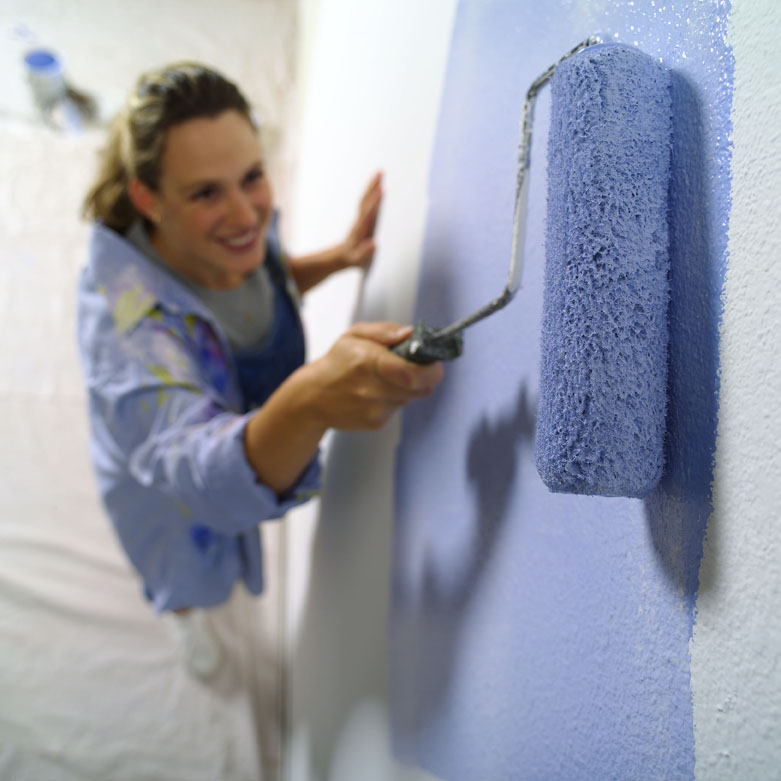
Posted in Buying, Selling, and Living by Justin Waskow
 On any given weekend in my house, at least a couple of hours will be spent watching the designers, craftspeople and entertainers on HGTV or its spunky sister station, the DIY Network. The premise of these home-centered television networks is that somewhere, sandwiched between long commercial breaks for paint, faucets, flooring warehouses and something called “Slab Jacking”, you’ll find programming about real people making real decisions about their homes. Sometimes those decisions are about buying a home, while other times they may be about selling or remodeling a home. In all of the situations, experts are brought in to help and a camera crew just happens to tag along, so the rest of us can enjoy the unfolding drama from the comfort of our couches.
On any given weekend in my house, at least a couple of hours will be spent watching the designers, craftspeople and entertainers on HGTV or its spunky sister station, the DIY Network. The premise of these home-centered television networks is that somewhere, sandwiched between long commercial breaks for paint, faucets, flooring warehouses and something called “Slab Jacking”, you’ll find programming about real people making real decisions about their homes. Sometimes those decisions are about buying a home, while other times they may be about selling or remodeling a home. In all of the situations, experts are brought in to help and a camera crew just happens to tag along, so the rest of us can enjoy the unfolding drama from the comfort of our couches.
Home improvement programming has been around for a long time and is generally considered reality TV, but a lot of the real life is lost between cuts. Here’s a quick guide of some of the more popular programs.
House Hunters – The formula is simple but always entertaining. Each episode begins with someone unhappy with their living situation, so they call an agent and look at 3 properties. After weighing the options, a home is chosen. Of course, this show is over-simplified and leaves out the long weekends the buyer spends in their agent’s car driving from listing to listing. What you do get is a sense of home values and styles in different regions, the humor of buyers’ reactions to homes, and the excitement new home owners feel as they take the keys to their dream home. You rarely get the type of tension home shopping can bring. The big climax of the show is when an offer is made: the narrator might say something like, “Though their offer was rejected the first time around, the other buyer ultimately backed out and they ended up getting the house for X amount.” But I don’t think they usually talk about it at all. For that kind of tension, you need to check out Property Virgins. The best part of the half hour happens in the last 30 seconds when you see how the new owner redecorates the home in their own style.
Property Virgins– Similar premise to House Hunters, except these first-time homebuyers walk through the basics. The best part about the show is the excitement (and sometimes clumsiness) of the virgin house-hunters. The worst part of this show is when would be homebuyers have unrealistic expectations for their first home.
House Hunters International – Comparable to House Hunters but everyone has accents and the kitchens are shockingly small.
Designed to Sell – Did you know that your spare bedroom filled with Grandpa’s taxidermy and the vintage 1950’s kitchen can be a turn-off to potential buyers? Valuable lessons like these are a just a few of the gems I’ve picked up on Designed to Sell. Each episode features a home which has been racking up days on the market but no one is interested in buying. That’s where the army of carpenters and designers step in. When they’re done, the house that looked like Grandma’s musty basement now looks like the lobby of a hip hotel, and they only spent a few hundred dollars. I love this program for the inspiration but find it short on reality. The listed prices of these improvements don’t seem realistic, and I often wonder if the costs include the lifetime of carpentry skills, design training, garage filled with power tools and time required to do the job. If you are looking for design ideas and hope for a home that isn’t attracting buyers, you’ll find some great ideas here, but take the true cost of those improvements with a grain of salt.
Real Estate Intervention – Being a real estate agent takes a lot of diplomacy, and this is never more important than that moment they suggest a market-friendly price to a home seller. On Real Estate Intervention, that diplomacy generally fails, sellers are unrealistic, and a stern man with a menacing mustache steps in for an intervention. He dishes out tough love to the seller and paints a clear picture of market reality. In a half hour he is able to change minds and make the seller feel good about the decision they made.
This Old House – This PBS staple wrote the book on home improvement programming. With TOHyou’ll trade commercials for pledge drives, but you’ll also get a more cerebral home improvement viewing experience. TOH does take patience, as it takes a full season to complete a home improvement project instead of 30 minutes on other programs. If you are looking for the same quality instruction in a more digestible format, you can check out the spin off, Ask This Old House.
Be warned that the home improvement bug often bites soon after watching any of these programs. After a long HGTV bender, I find myself wandering through the paint sample aisle and making trips to home improvement stores that aren’t on my way home from the office. Sometimes life does imitate art and the voice in the back of my head keeps saying, “They make it look so easy.”
What about you? Do you find home-improvement shows useful or do you think they set unrealistic expectations? What are your favorite home-improvement resources?
by Justin Waskow
Divorce, Custody, and Employee Mobility

Posted in Uncategorized by Windermere Guest Author
Divorce, child custody and relocation are all difficult topics however, knowing the facts will help you make the decisions that are right for you and your family. Below you will find an excerpt from an article recently published in Mobility Magazine by Windermere’s own Peggy Scott, GRI, CRP, GMS. She is the relocation director and designated broker for Windermere Relocation and Referral Services, Seattle, WA. You can read the article in its entirety here: http://bit.ly/9PrKxL

“As society becomes increasingly mobile, so does the frequency with which global mobility professionals encounter relocation cases involving child custody. Scott defines custody, discusses its effects on mobility, and offers a case study demonstrating how divorce affects the relocation process.”
While the divorce rate varies greatly in each country of the world, affecting the lives of men and women, those with children be affected the greatest. No family law generates more concern, strife, and emotional turmoil than child custody and visitation matters. Every court around the nation will advocate for the best interest of the children involved in divorce.
Developing an amicable parenting plan or agreement for the interests of the children is the best solution to establishing custody of a child. The best interest of the child is served by a parenting arrangement that best maintains a child’s emotional growth, health and stability, and physical care. According to Washington state law, the best interest of the child ordinarily is served when the existing pattern of interaction between a parent and child is altered only to the extent necessitated by the changed relationship of the parents.
If the parents cannot reach an agreement concerning the custody and parenting plan for the child, then the court may establish either sole or mutual decision-making authority as well as residential provisions. The parenting plan or agreement needs to support, in detail, the child’s best interest in the areas of school, physical care, traveling expenses, individual parental authority, and residence options and rules. All divorce cases involving child custody, whither uncontested or contested, must include a parenting plan or custody order (either by agreement or ordered after trial) that is adopted by the courts.
To read the rest go here: http://bit.ly/9PrKxL
Considering becoming a landlord? How to evaluate whether to rent or sell your property
Posted in Selling and Property Management by Windermere Guest Author
Over the last few years, we have seen an increase in homeowners choosing to become landlords rather than placing their homes on the market. In deciding whether or not becoming a Landlord is right for you, there are a number of factors to consider, but primarily they fall into the following three categories: Financial Analysis, Risk and Goals.
 The financial analysis is probably the easiest of the three to assess. You will need to assess if you can afford to rent your house. If you consider the likely rental rate, vacancy rate, maintenance, advertising and management costs, you can arrive at a budget. It is important both to be reasonably correct in your assumptions and to have enough reserves to cover cash-flow needs if you’re wrong. The vacancy rate will be determined by the price at which you market the property. Price too high and you’re either vacant or accepting applicants that, for some reason, couldn’t compete for more competitively priced homes. Price too low and you don’t achieve the revenue you should. If you want to try for the higher end of an expected range, understand that the cost may be a vacant month. It is difficult to make up for a vacant month.
The financial analysis is probably the easiest of the three to assess. You will need to assess if you can afford to rent your house. If you consider the likely rental rate, vacancy rate, maintenance, advertising and management costs, you can arrive at a budget. It is important both to be reasonably correct in your assumptions and to have enough reserves to cover cash-flow needs if you’re wrong. The vacancy rate will be determined by the price at which you market the property. Price too high and you’re either vacant or accepting applicants that, for some reason, couldn’t compete for more competitively priced homes. Price too low and you don’t achieve the revenue you should. If you want to try for the higher end of an expected range, understand that the cost may be a vacant month. It is difficult to make up for a vacant month.
Consider the other costs renting out your property could accrue. If you have a landscaped or large yard, you will likely need to hire a yard crew to manage the grounds. Other costs could increase when you rent your home, such as homeowner’s insurance and taxes on your property. Also, depending on tenant turn-over, you may need to paint and deal with maintenance issues more regularly. Renting your home is a decision you need to make with all the financial information in front of you. You can find more information about the hidden costs of renting here.
If your analysis points to some negative cash-flow, that doesn’t necessarily mean that renting is the wrong option. That answer needs to be weighed against the pros and cons of alternatives (i.e., selling at the price that would actually sell), and some economic guesswork about what the future holds in terms of appreciation, inflation, etc. to arrive at an expectation of how long the cash drain would exist.
Risk is a bit harder to assess. Broadly though, it’s crucial to understand that if you decide to lease out a home, you are going into business, and every business venture has risks. The more you know, the better you can mitigate those risks. One of the most obvious ways of mitigating the risk is to hire a management company. By hiring professionals, you decrease your risk and time spent managing the property (and tenants) yourself. However, this increases the cost. So, as you reduce your risk of litigation, you increase your risk of negative cash-flow, and vice versa… it’s a balancing act, and the risk cannot be eliminated; just managed and minimized.
In considering Goals, what do you hope to achieve by renting your property? Are you planning on moving back into your home after a period of time? Will your property investment be a part of your long-term financial planning? Are you relocating or just hoping to wait to sell? These are all great reasons to consider renting your home.
Keep in mind that renting your family home can be emotional. Many homeowners LOVE the unique feel of their homes. It is where their children were raised, and they care more about preserving that feel than maximizing revenue. That’s OK, but it needs to be acknowledged and considered when establishing a correct price and preparing a cash flow analysis. Some owners are so attached to their homes that it may be better for them to “tear off the band-aid quickly” and sell. The alternative of slowly watching over the years as the property becomes an investment instead of a home to them may prove to be more painful than any financial benefit can offset.
In the process of considering your financial situation, the risks associated with becoming a landlord, and the goals you hope to achieve with the rental of your property, – ask yourself these questions. Before reaching a conclusion, it’s also a good idea to familiarize yourself with the landlord-tenant-lawspecific to your state (and in some cases, separate relevant ordinances in the city and/or county that your property lies within) and to do some market research (i.e. tour other available similar rentals to see if your financial assumptions are in line with the reality of the competition across the street). If you are overwhelmed by this process, or will be living out of the region, seek counsel with a property management professional. Gaining experience the hard way can be costly.
J. Michael Wilson is the dedicated broker at Windermere Property Management Seattle, and has 17 years of experience managing properties in the Seattle region.
What You Need To Know About Buying a Bank Owned Home

Posted in Uncategorized by Windermere Guest Author
 Recently, news about how to purchase a real-estate owned (REO/bank owned) home, foreclosure property or short sale is everywhere. Bank owned homes are sold directly from the lender after the foreclosure process is complete, and while you may save quite a bit of money by choosing to go for this type of home, it is not without trials and tribulations. The process of purchasing a home directly from a lender can be long and arduous, but could very well be worth it in the end.
Recently, news about how to purchase a real-estate owned (REO/bank owned) home, foreclosure property or short sale is everywhere. Bank owned homes are sold directly from the lender after the foreclosure process is complete, and while you may save quite a bit of money by choosing to go for this type of home, it is not without trials and tribulations. The process of purchasing a home directly from a lender can be long and arduous, but could very well be worth it in the end.
If you have your sights on a particular home or are looking to find a deal on your first, working directly with the lender may be your only option. Purchasing a bank owned home is not for the faint of heart, here are some tips for negotiating the REO process:
1. Be prepared: The condition of bank owned properties is usually poor and hard to show. Past owners may have left angry and left the home in bad condition with foul smells, missing appliances, wires taken from breakers, gas fireplaces gone, even bathrooms without toilets and sinks.
2. Understand the costs: Maintenance or repairs may be necessary, since these homes have been vacant for an unknown period of time–sometimes months or years. Keep in mind, when they were occupied the owners could have been under a financial hardship, preventing them from doing regular seasonal care or repairs when needed. Remember as well that the bank is trying to sell the house immediately, so you will receive a financial break in the price rather than a willingness to negotiate on the maintenance and repair issues.
3. Accept the unknown: In traditional real estate transactions, homeowners fill out Form 17 regarding important information about the history of the house. A bank owned home is either exempt or marked with “I don’t know” throughout the document. Not having the accuracy of this 5 page disclosure form could leave you with a lot of unanswered questions on the history of the home.
4. Know what is non-negotiable: The pricing on the house may not get much lower. Some of these properties can be “a dream come true” if you get them at an amazing price, or they could be your worst nightmare. Do your due diligence researching any property, and conduct all necessary inspections to safeguard yourself. Some major repairs may be negotiable, but will likely not reduce the home price.
5. Make a clean offer: The higher the price you can offer, the better. Include your earnest money, keep contingencies to a minimum, and suggest a reasonable closing date. The simpler your offer is, the higher chance you have of the bank accepting your offer or countering in a reasonable time period.
6. Be patient: Consult with a professional who handles bank owned home purchases to help you negotiate the pathway to homeownership. The process of purchasing a bank owned, foreclosed or short-sale home is typically longer than a typical real estate sale.
What do you want to know about purchasing bank owned, foreclosure and short-sale properties?
Tonya Brobeck is a Broker at Windermere Lake Stevens. She has a total of 17 years combined residential real estate and worldwide resort sales & marketing experience.
 Facebook
Facebook
 X
X
 Pinterest
Pinterest
 Copy Link
Copy Link
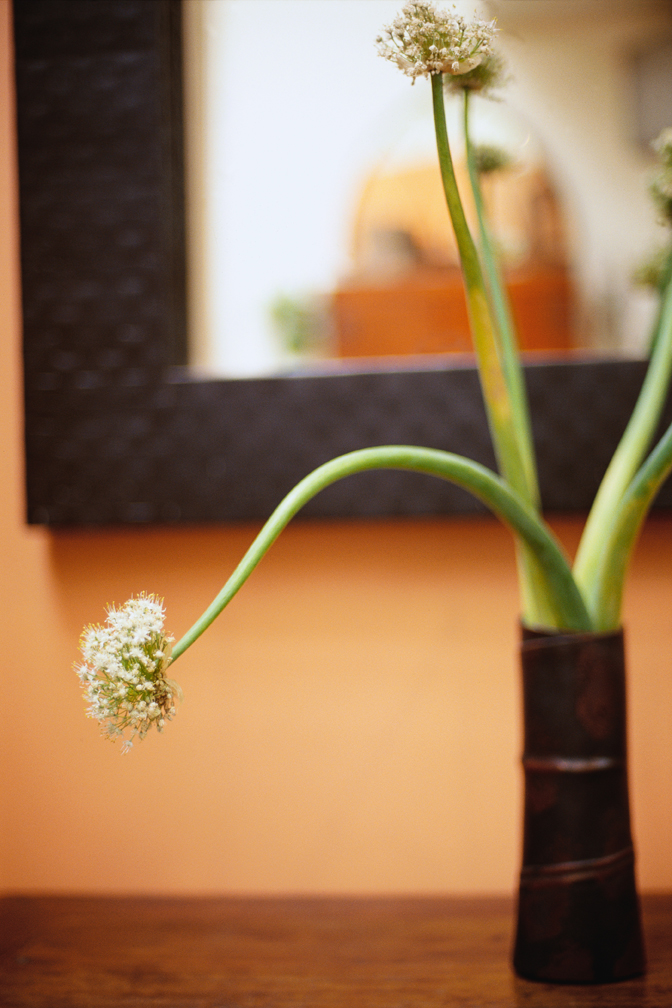
 What is a home if not personalized to those who share its walls? Feng Shui is intended to create a place of peace, balance and harmony for you and yours. You can achieve this type of atmosphere through the things you bring into your home and the way that you stage your environment.
What is a home if not personalized to those who share its walls? Feng Shui is intended to create a place of peace, balance and harmony for you and yours. You can achieve this type of atmosphere through the things you bring into your home and the way that you stage your environment.